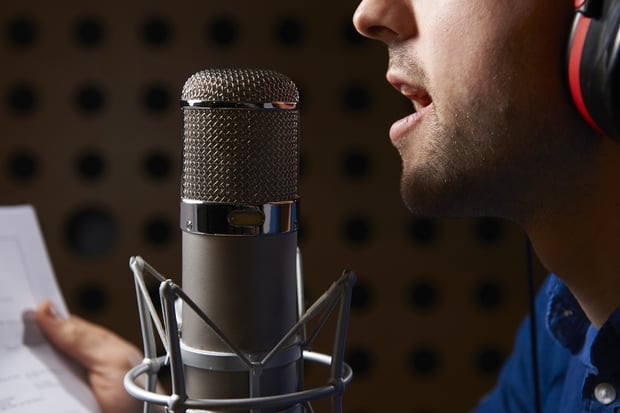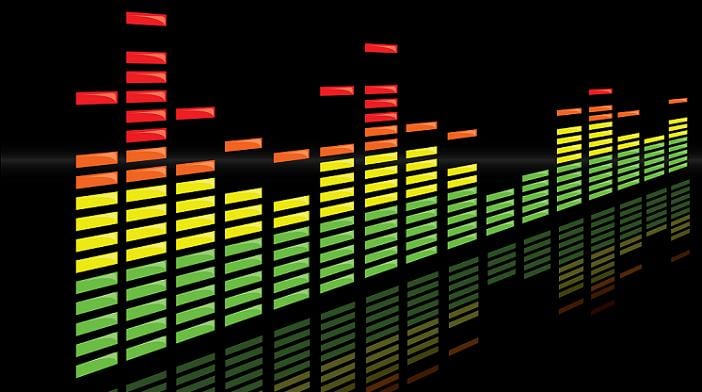 Perfect pitch: more than just a goal for singers. (Image via Shutterstock)
Perfect pitch: more than just a goal for singers. (Image via Shutterstock)
This article originally appeared on Living on Gigging. The full Perfect Pitch course can be purchased for $0.99 here.
Is it possible to get a “yes” every time you make a request? Maybe. Is it possible to get a response every time? Absolutely.
It used to be a major struggle to get a reply back after sending an email to a company, venue, a potential collaborator or producer, or literally anyone. I found myself wishing for them to just say “no” rather than nothing at all.
I also struggled with how to be personal but also save time. Writing to 30 music venues a day asking for a date was getting tedious, but I knew copy-and-paste would start to feel spammy. Also, I noticed that even when making tentative plans with friends or family, I never got solid yeses or nos. So I did some research on why this was and found a few things I was missing.
Due to my list-making nature, I put this eight-step process together. It’s called the Perfect Pitch. And I tested it. And fine-tuned it.
And good news: it works! I’ve shared it with other people, and they said it works.
I’ve used it for getting gigs, placing music in TV shows, raising $30,000 through fan funding, and getting paid a higher fee for a scoring project. The number of responses I receive has dramatically increased, as has the number of yeses!
So, here’s the process of crafting your perfect pitch… and being powerful in making requests so that you not only get a response, you get a yes. Give it a whirl and let me know in the comments below how it goes!
(P.S. The more detailed video version of this is in my Skillshare course, which you can get here. You also can get it free with the monthly subscription to the In The Key Elite, a small group of musicians working towards kicking butt in their careers.)
1. Intention
Before you sit down to write the email or make that call, you need to know what you want the result to be. If you’re asking for a job, you probably want to first have an interview. Do you want someone to listen to a song and give you feedback? Do you want to be signed? Most of my cold-call emails are about having a conversation first.2. Get related
Now that you’re in the communication itself (whether an email, phone call, or even in person), make sure to let that person know how you found him or her: were you referred by a friend? Did you do a Google search looking for great licensing agencies, and he or she caught your eye? Let that person know! If you're already familiar with this person, this is a good time to ask a personal question to show that you’re interested. This is one sentence and not about you.
[How to Send a Killer Email to Anyone in the Music Industry]
3. Struggle
Right now, without you in that person's life, there's a struggle. Reaching out to music supervisors, I make the assumption that they're looking for the best song for the next episode of the show and have a pile of music to listen through. Or trying to plan a family reunion? Right now, without you starting this conversation, everyone goes on with their lives and doesn’t connect. You’re setting up the problem so you can then provide a solution. Again, this is not about you. One to two sentences.
4. What’s possible?
Here's where you paint a picture of what's possible. You're not yet offering a solution but just getting the reader/listener to see this pretty picture. For the music supervisor: going home early on a Friday. For the family reunion: fun times catching up, growing closer, some great family photos. One to two sentences.
5. The solution
What opportunity are you offering? (This is not a request, merely a statement.) For the music supervisor: Look no more! I’ve listened to the show and have two great songs that would fit perfectly within the vibe and mood the show’s exhibited. For your family reunion: I’m offering to plan a family reunion. One sentence.
6. Specific yes/no request
This will be a question that they will answer yes or no to. They may also offer another option. For example, “Will you be able to listen to these two songs by tomorrow and have a call at 4:00 p.m. EST about collaborating?” Or “Are you available to come to a family reunion at Bryant Park on Saturday, June 3 at 10:00 a.m.?”One key thing to note: you want to make your readers/listeners do
One key thing to note: you want to make your readers/listeners do as little work as possible. Don’t ask when they're free to talk. Then they have to go through their calendar, think of what they haven’t added in, and you’re way less likely to get a response. One question.
7. Closing
As you would any proper communication, say goodbye. End with something that shows you’re interested and looking forward to collaborating, seeing each other, etc. One sentence.In your signature, make sure to have your phone number and any links to important websites. Don’t put links to social media sites you’re not active on. Pick one.
In your signature, make sure to have your phone number and any links to important websites. Don’t put links to social media sites you’re not active on. Pick one.
8. Follow-up
If you hear no response in the first week, follow up with a quick email asking if that person received your communication. Copy the original email below so they don’t have to search for it. Then start again at number six: make that request! If you don’t hear back after the first follow-up, send another, asking for permission to continue to follow up, stating that you understand they must be extremely busy. This is where I get 75 percent of my responses that turn into conversations!
[Are You Following Up Properly With Your Music Business Contacts?]
If you do the math, these are not very long and verbose communications, and they're not all about you trying desperately to sell yourself. You don’t even get to talk about you until number five, or even six, depending on how you word things.
You can use this format in your social media posts. Don’t say weak things like “Check out my new video.” No one’s brain is thinking “yes” or “no.” There's nothing specific, there's no opportunity. Try something else, like playing a game of getting 100 new views by the end of the day, and go through this process. The opportunity is that they get to win. (Hint: people love winning games.) The request is, “Will you view and share this video before 5:00 p.m. EST today?”
Last thing: don’t be surprised if you get more responses including nos. This is a good thing – it means you can stop wondering if so-and-so got your email. You can ask that person if following up in a few weeks/months works for them. You have a relationship now, and even if he or she isn't interested in what you’re currently offering, he or she may be in the future. Or that person will tell you. With more nos come more yeses! Now just follow up and build the relationship, and watch the results flow in!
Cheryl B. Engelhardt is a singer-songwriter, composer, and music business consultant. All her stuff lives at cbemusic.com. When she’s not writing songs for ads or running her MX4 mastermind course, she’s hanging with her basset hound and trying to be ironic somewhere between NYC and the Hudson Valley. Sign up for her free 7-Day Career Challenge to reboot and get some new results.







